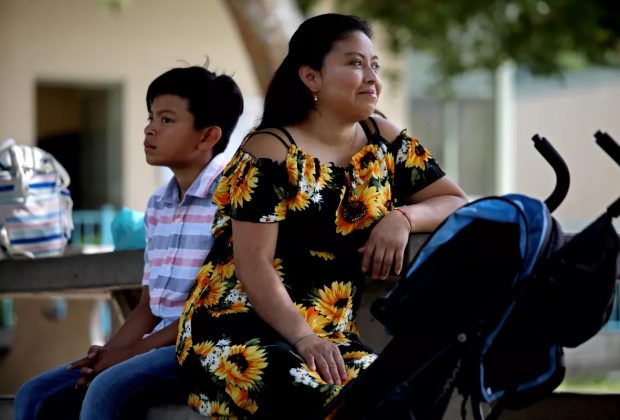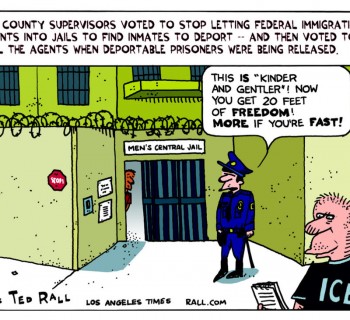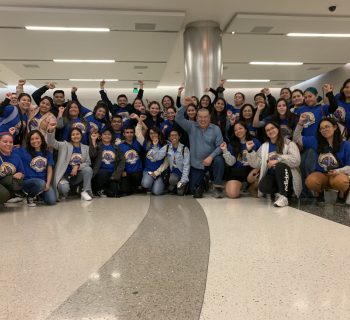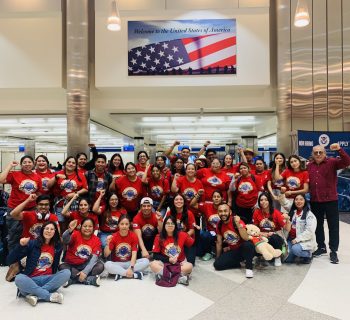By Hamed Aleaziz | Los Angeles Times | OCT. 6, 2022 | Photo by Gary Coronado
Good morning, and welcome to the Essential California newsletter. It’s Thursday, Oct. 6. I’m Hamed Aleaziz. I cover immigration policy and just joined the paper this summer. I live in Sonoma County.
Before coming to The Times, I was at BuzzFeed News, where I covered immigration and the Department of Homeland Security. That neatly segued to my new role, where I focus on the DHS and other agencies and examine how immigrants are coping with issues such as the shifting policies of different presidential administrations.
For example, in August, we detailed how the Biden administration was making sweeping changes at U.S. Immigration and Customs Enforcement after former President Trump’s tenure and how that was affecting immigrants in California. (Read more here: “The Biden administration remade ICE after Trump: But will it last?”)
More recently, I read in our sister paper the San Diego Union Tribune about how San Diego’s Office of Immigrant Affairs was leading an effort to write welcome notes in 15 languages to newly arrived refugees and asylum seekers. The office was established in July. I reached out to Rita Fernandez, head of the office, to talk about the work they do and the state of immigration in her city. The conversation has been condensed and edited for clarity.
What’s next and what do you hope to do for immigrants in San Diego?
We are creating a number of different initiatives to help our immigrant residents, which represent one-quarter of our overall population. We are putting together initiatives around expanding language access in the city, so that our city departments have a number of different translation tools at their disposal — so that our foreign-born communities when they reach out to the city are able to communicate with us in their language. We are also putting together initiatives around naturalization, know-your-rights presentations and also economic opportunity and financial literacy. What we are really seeking to do is to provide vital resources to immigrants — those who have been here for years, for decades, and maybe they are eligible to naturalize and become U.S. citizens, as well as to refugees who have recently resettled here.
U.S. Customs and Border Protection has released data detailing how there is an increase in encounters at the border. Have you as a city noticed an uptick or changes at the border?
Being a border city, we’re on the forefront and frontlines of immigrant integration and welcoming immigrants. We have for many years seen an increase in asylum seekers, since back in 2015. We saw an increase in unaccompanied minors at the border [in 2021]. At the time, our convention center was closed to events, so we used it as a temporary shelter for unaccompanied minors. Regardless of what trends we’re seeing, I think San Diego, certainly because of our geography, we are always at the forefront of working with those populations.
[Note: The Union-Tribune wrote about the transformation of the convention center into a temporary home filled with “rows of cots, hula hoops, soccer nets and ping pong tables,” a place where “teenage girls’ voices ... filled the exhibit halls with banda songs and laughter.” Read more here.]
Immigration has become a divisive issue nationally; have you seen that in San Diego?
Referring back to the example that I used about the unaccompanied minors coming to our region — I think we were initially concerned about that, that there might be some anti-immigrant sentiment. But the reaction from our community was overwhelmingly positive. People would contact our office to find out how they could volunteer, how they could donate items. Everyone stepped up — from our school districts to our county government to our nonprofits and civil society, the private sector, the arts as well — [seemingly] everyone stepped in to welcome these folks. It was really inspiring to see that.







